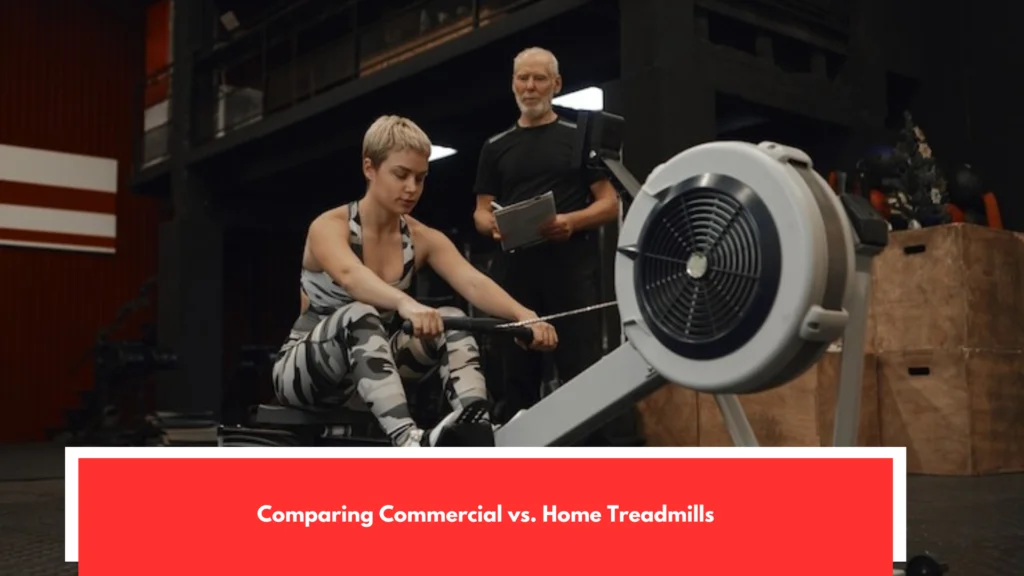When you think about Comparing Commercial vs Home Treadmills, have you ever wondered what the difference is between a commercial treadmill and one made for home use? There are many differences, including construction, features, technologies, and materials. There are many types of treadmills on the market. It’s very important to understand the distinction so you can figure out which is the best option for you. But don’t worry, this post will help you understand whether it’s better to stick with a treadmill at the gym, or if you think a home treadmill might be a good option.
Let’s get down to business As you might think, Comparing Commercial vs Home Treadmills are quite different, and one of these differences is durability. Commercial treadmills are designed and tested to run for long periods of time daily, usually for gym use. Some lines are made for clinics and hotels. In this case, the treadmills are designed to work for less than gym treadmills and use less robust components. And home-use treadmills are designed for short-term use, a few days a week. They’re designed to be smaller and quieter.
Home treadmill and commercial treadmill, what’s the difference?

Commercial treadmills will have more advanced features, such as heart rate monitors, interactive displays, incline options, and exercise programs that you can connect to your phone or tracking device. All for high-intensity training. Home-use treadmills, on the other hand, have more basic features that make them lighter and more affordable. The features are designed for moderate-intensity, short-duration workouts. After reading the previous topics, you might conclude that commercial treadmills are more expensive because they have a more advanced and durable system that aims for better.
Performance and more use. Of course, it depends on how much you’re willing to spend on the equipment and maintenance. Here are some excellent options for home and commercial treadmills in the Athtletic catalog. So, which is the best option? Ultimately, it depends on the customer’s needs, how often they will use the equipment, whether it’s for professional or amateur use, how much the customer is willing to invest, their budget, and the available space.
Cons of the treadmill

Commercial treadmills are ideal for shared spaces and intensive use, while home treadmills are better suited for personal fitness needs and smaller spaces. When it comes to treadmills, you get what you pay for, so be sure to test the equipment before purchasing. Commercial treadmills differ in the quality and durability of their components. For example, they have motors that provide longer use than home treadmills. The running deck is usually larger and the cushioning system is more advanced, making the user feel more comfortable while exercising.
A sleeker structure will provide a device with a better absorption system. Home treadmills are designed to fit into small spaces and are usually foldable, ensuring versatility because they are easier to store. If your members are primarily looking to improve their running or jogging skills, a commercial treadmill may be the best option for your gym. Treadmills provide an excellent workout for those looking to burn calories and improve cardiovascular endurance.
Advantages of the treadmill

Running on a treadmill burns more calories per hour than running on an elliptical. The incline of a treadmill is ideal for hill training and strengthening leg muscles. Running on a treadmill simulates the body’s natural movement, making it easier for beginners to use. Treadmills are more affordable than ellipticals. The moving belt allows users to easily vary the intensity and speed of their workout. An elliptical is a stationary cardio machine that simulates running, walking, or climbing.
The motion is smooth and low-impact, making it easier on the joints than running on a treadmill. An elliptical has two pedals and may include handles for moving the upper body. Many commercial ellipticals come with adjustable resistance levels and preset workout programs to customize the user’s training regimen. TRUE Fitness’s commercial elliptical has a compact, space-saving design, so it can fit into any facility, regardless of size. It features an adjustable stride length, allowing users of all heights to use the machine comfortably.
Conclusion

Some ellipticals also incorporate Cardio 360™ technology. This feature allows users to follow a personal trainer on the screen while performing various exercises, such as hill climbs and sprints. This makes workouts more engaging and challenging for users. If your gym members have joint issues or are looking for a low-impact workout, a commercial elliptical may be a better option to enhance your gym than a treadmill. An elliptical provides a full-body workout and can be a great option to improve cardiovascular health without stressing the joints.
Both the treadmill and the elliptical provide effective cardiovascular workouts. Some members may prefer one machine over the other, while others may use both as part of their exercise routine. However, here are some key differences to keep in mind when deciding which machine to add to your fitness center. Treadmills provide a high-impact workout due to the constant pounding on the belt, while ellipticals offer a low-impact workout. This difference makes the elliptical the better choice for people with joint pain. Treadmills primarily work the lower body. Ellipticals can work both upper and lower body muscles.
